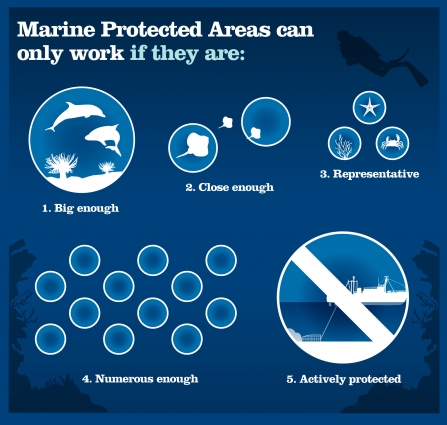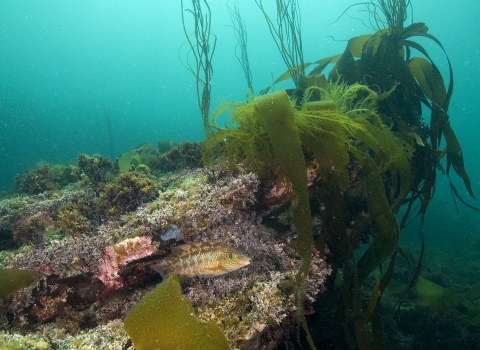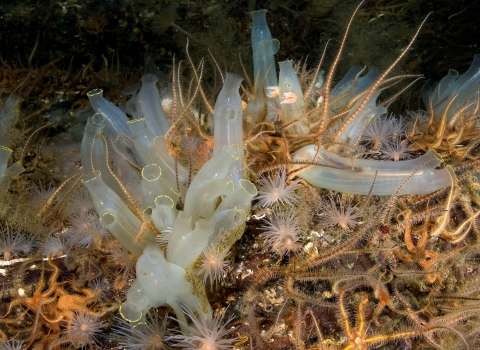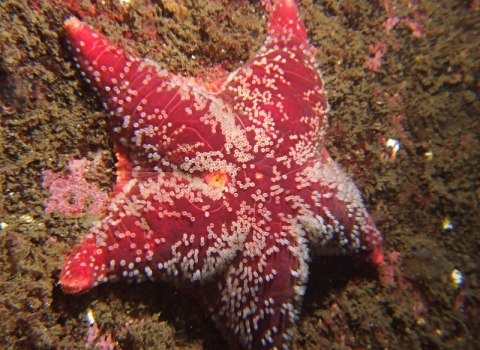Marine Protected Areas
Marine Protected Areas (MPAs) are places at sea where certain damaging activities are restricted, much like nature reserves on land. They are a tried and tested means of protecting habitats and wildlife at sea and there are many around the world.
In the UK, there are several different types of Marine Protected Areas that will act to make a network of protection around our coasts and throughout our seas. At the moment this network is not yet complete, there are some missing links, and management is still being implemented on a site-by-site basis. However once complete, the network will protect a wide range of marine wildlife and the special places that they call home.
Marine Conservation Zones
Across the UK, each country has the power to create Marine Protected Areas to protect a range of nationally important, rare or threatened habitats and species. In England and non-devolved waters these are called Marine Conservation Zones.
European Marine Sites
European Marine Sites are areas at sea that are designated to protect wildlife and habitats that are important at a European level. They are have been created under EU Legislation and will be transferred over to our national legislation when we leave the EU.
There are two types of European Marine Site: 1) Special Protection Areas (SPAs) that protect birds and their feeding and breeding habitats; and 2) Special Areas of Conservation (SACs) that protect other wildlife and important habitats.
How Marine Protected Areas work
Protecting individual special places at sea is important, but to really bring our seas back to life we need a network of Marine Protected Areas.
To achieve better seas for both people and wildlife, our Marine Protected Area network must protect not just rare and threatened wildlife, but the whole range of ‘typical’ habitats and wildlife found in healthy seas. For us in the Irish Sea, this includes habitats like our honeycomb worm reefs, seagrass meadows, sandy, gravelly or muddy sea floors and seabirds to name but a few.
Designating a Marine Protected Area is only the first step towards protecting the precious wildlife and habitats within. Active management is required to make sure they are doing the job for which they were created - actively protecting our wildlife at sea from damaging activities. As nature conservation in the seas has come in after nature conservation on land, securing the designation and management of the network is still a work in progress.

A network of marine protected areas is being setup throughout UK seas. These areas must meet these 5 main criteria if they are to work for people and for wildlife.

Corkwing wrasse male with nest © Paul Naylor
Marine Conservation Zones
We are working to ensure it works
Once management measures or plans are in place, monitoring is required to ensure Marine Protected Areas are effective.
Through our marine policy programme we work closely with the North Western Inshore Fisheries and Conservation Authority and the Marine Management Organisation to make sure that the right management is brought in for each Marine Protected Area.
We also help to collect data to monitor the condition of the Marine Protected Areas across the North West by undertaking scientific surveys of key species and habitats and through our citizen science 'Shoresearch' programme.
Marine Protected Areas have been proven to have a positive effect beyond their boundaries, where thriving wildlife populations spill out into the surrounding (non-protected) sea.
In the UK, there is a well-researched example of this around Lundy Island, England’s first Marine Conservation Zone. Here, the lobsters within the protected area were found to be larger than those in the surrounding area. Over time, the larger lobsters moved out into the non-protected area. This “spillover effect” has been found to benefit fisheries, showing that Marine Protected Areas are good news for both people and wildlife.


